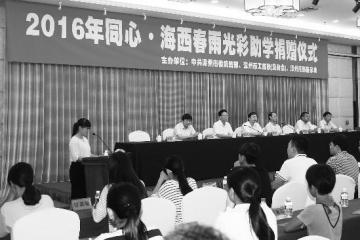“ChainDynamics”ofGBAEnterprises750,0
来源:证券之星 发布时间:2024-10-23 07:07 作者:如思 阅读量:4200
In 1995, Bill Gates, in his book, The Road Ahead, made a prescientprediction about the full digitalization of the future world.Overthe past three decades, as the global wave of digitalization continues to surge, innovative models such as digital banking, e-commerce and digital governancehave become areality.
This trend has also affected thetraditional manufacturing industry. For Guangdong, aneconomic powerhouse thriving through itsmanufacturingindustry, digitalization is a need, rather than awant.Guangdong’s industry scale accounts for one-eighth of the national total, consistingofall 31 major manufacturingcategories, with 15 ranking among thetop enterprises domestically.
In 2023, the province’s value-added industrial output eclipsed4.87 trillion yuan, accounting for overone-third of its GDP. It’s reasonableto claim that theindustryhas become the largest sector in Guangdong’s economy, and the single largest contributor to regional GDP growth.
Amidst the wave of digitalization, numerousenterprises have begunexploring digital transformation. Nevertheless, for millions of small and medium-sized enterprises, the constraints of limited technology, expertise,and funding, haveled toa lack of willingness, ambitionor technicalability to reap the benefits ofdigital transformation.
In the sense of modern industrial chain, the making of a single bar of soap would require thejoint effort of multiple enterprises,bothupstream and downstream. While Python and analytical datasets are widely adopted in leading enterprises, companies usingmanual processing of orders and reportsareinevitably boggeddown by inefficiencies,affecting theentire industrial and supply chain.
Under thesecircumstances,aunique“chain-style transformation”has emergedin the manufacturing industry. Put simply,a “chain-style transformation”indicates key enterprises serve as individual chain leaders in the industrial chain and cluster,”whichfacilitates thecollaborative digital transformationof SMEs upstream and downstream. Metaphoricallyspeaking, it'slikea Kungfu master rallying his disciples.
As early as 2018, Guangdong tookthe initiative in relative policy-makingand issuing,along withtheconstruction of 14 province-level pilot cities,including Guangzhou and Zhuhai.In early 2024,the provincial government allocated 774 million yuan towardsdigital transformationfor SMEs, focusing on full-process digital upgrades for these enterprises.
There are two main models in this digital reform. The firstmodel is establishedby leading enterprises, whosemethods of transformation are facilitated through commercial order, or supply chain collaboration platform for SMEs.
For example, home appliance giant Midea has established its industrial Internet platform, Meicloud. Through this platform, Saipu, asupplierfor washing machine parts, has overcomeitsbottleneck of inaccurate inventory information and delayed order fulfillment,improving its overall inventory turnover rate by more than 10%.Thusfar, Meicloudhas included 4 million industrial equipment and devices, developed more than 1,200 industrial APPs, and served 470,000 enterprises.
The secondmodel is led by a so-called “traction enterprise”,whoprovides commercial value to SMEs or developsdigital products to facilitate the transformation.Astandout example isthe textile industry in Guangdongprovince. Zhijing Technology, as atractionenterprise, has developed several intelligent cloud services which are tailored for textile and garment industry. In the past, the procurement process for a clothing factory would take several days as its owner had to select raw materialsin the market.Now with the cloud,asimple input of materialand style information directs the userto the desiredfabric, as quickly as ordering a takeout at home.
Throughthese methods,the “chain-style transformation”in Guangdongprovince has achieved remarkable results. Overthe past fiveyears,Guangdong has promoted digital transformation among over 30,000 industrial enterprisesabove the designated size,and “wide cloud adoption”for more than 750,000 SMEs.Key indicators includingthe scale of digital economy, the scale of industrial digitalization, and the regional development index of industrial internet platforms, all rank at thetop nationwide.With the stout tailwind of digitalization, batches of SMEs have achievedremarkable gains incost reduction, quality improvement, and efficiency enhancements.
On the pathofmanufacturing powerhousebuilding, Guangdong has found its way forward. The industrial supply chain has achieved deeper integration with “chain-style transformation,” and the manufacturing industry will surelyprosper under the outlook of a “better chain for better Guangdong.”
出品:南财国际传播中心 21新媒体中心 创意互动中心
策划统筹:于晓娜 丁青云
内容统筹:谭婷
执行统筹:黄欣然
设计统筹:林军明
视频统筹:白宇航
监制:施诗
英文翻译amp;配音:李莹亮
海外运营监制: 黄燕淑
海外运营内容统筹: 黄子豪
运营支持:曾静娇
审校:张晔 黄志明
郑重声明:此文内容为本网站转载企业宣传资讯,目的在于传播更多信息,与本站立场无关。仅供读者参考,并请自行核实相关内容。









